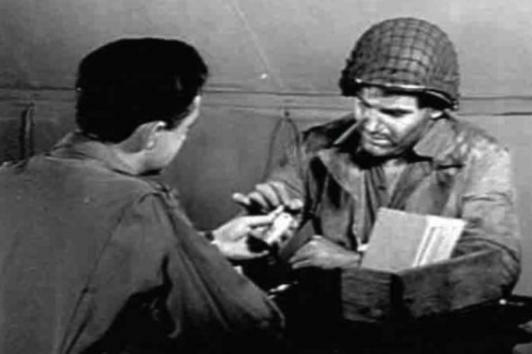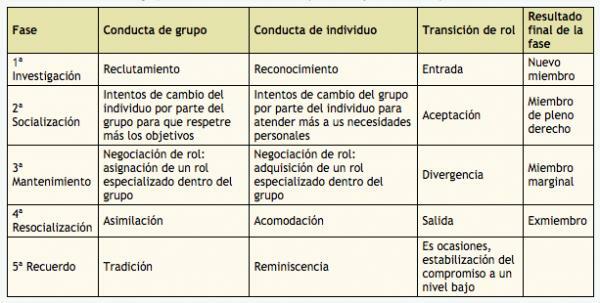
The war raisedrequirements to social psychology, by asking it to study applied problems of relevance to the war effort. In the 1940s and 1950s there was a great expansion of research in key areas. From the 2nd World War to the period of the crisis of Social Psychology. During the war the greatest some of the investigations were empirical but not experimental. The notion of "reference groups" introduced by Hyman in 1942, played a fundamental role. In these investigations, human interdependence was enhanced.
Hovland: Program on persuasion and attitude change. Variables that influence persuasion:
- With respect to fountain (person delivering the message): Perceived prestige, credibility, expertise, attractiveness, and the ability to inspire confidence.
- With respect to message: Degree to which the arguments presented are perceived as strong or weak, the discrepancy between the message and the position the receiver, the emotions generated by the message, and the fact that both sides of a topic are presented or only a.
- Variables of receiver: Attitudes already existing in the receiver, the implication with his ego and the commitment with these attitudes.
Adopted a "reinforcement" approach (from learning theory) to persuasion. Contemporary work examines the cognitive responses that the receiver makes to a message. The analysis of social influence made a great leap forward with Asch's study of conformity, and with the theories of dynamics of festinger groups (1950 and 1954).
1950 Festinger theory: Conformity was explained as a result of the pressures towards uniformity of task-oriented groups in which there was direct communication between members. The uniformity served as functions of group membership of: "Contrasting the social reality": It gave members a confidence in those beliefs that could not be directly contrasted with reality. The contrast of social reality validates one's beliefs through agreement with other people. "Group locomotion": it was perceived as instrumentally necessary for the group to achieve its own objectives. These pressures toward uniformity were increasing:
- The more cohesive the group was
- The greater the disagreements within the group.
- The more relevant the disagreement was to the group's goals and values.
1954 Festinger Theory: Outlined the social comparison process. Basic hypothesis: "People compare themselves with similar ones to reduce uncertainty about the appropriateness of their behavior, feelings and beliefs." This notion was applied to the explanation of group formation and interpersonal attraction, competition, conformity, emotional experience, and helping behavior.
From both theories: "When a social group has a well-established norm that specifies behavior correct, pressures tend to arise (towards the deviants and towards the majority) in the group to maintain that rule". Conformity: Movement of one or more deviants towards the group norm based on the social pressure of the majority. Asch theory (1952). Experimental Demonstration of Pressures for Compliance:
- A single naive subject faced with a group of apparent peers (collaborators of the experimenter), who made incorrect judgments, tended to conform in 33% of the critical trials.
- In the control conditions, without a group, almost no mistakes were made. However, a third of the subjects conformed to 50% or more of the critical trials, in one case in which the judgment is simple and lacks ambiguity and the meaning of group membership seems minimum.
- Their data provided evidence of independence and compliance.
Research has established that compliance to the group is stronger when:
- Group members are cohesive, similar, and interdependent.
- The deviant suffers from uncertainty (ambiguous stimulating situation or difficult task).
- The majority is unanimous and the deviant lacks social support.
- The deviant responds publicly. Most are more confident, competent, and more successful than the deviant.
These results and related theories have led to a distinction between two types of influence process:
- Cognitive-informational process leading to private acceptance: it may or may not be expressed directly in overt words or deeds. Normative social process leading to public complacency: Public behavior changes but may not lead to private attitude change.
Investigation of prejudice and conflict between members of different social groups:
- Ornament et al: Role of the "authoritarian personality" in the perception of anti-Semitic and fascist ideology (analysis Freudians and Marxists with innovative methods in empirical analysis of personality and attitudes policies).
- Sheriff et al: They explained prejudice as a form of intergroup behavior and not as an expression of personality.
They showed that groups compete or cooperate with each other depending on whether their relationship is characterized by a conflict of interest or by superordinate goals. Work Asch and Heider in the area of perception of people. In the late 1960s, the group's study seemed to be in decline.
Starting in 1950, there was a movement towards cognitive analysis of attitudes and social perception. Influenced by Gestalt ideas, two other cognitive perspectives joined:
- Bruner: work showing the impact of internal cognitive and motivational factors on perception. It is the school of the "New Look".
- The "Cognitive Revolution" (1960s): Rejection of behaviorism. Cognitive activity as "information processing": birth of social cognition (late 1960s).
Critical developments within social psychology:
Festinger: You published your book on cognitive dissonance: People have a need to maintain psychological consistency between their cognitions (beliefs, opinions). It generated a new interest in the cognitive processes that underlie social behavior. It produced a shift towards the study of individual cognitive and motivational processes. Based on Heider's pioneering work, 2 versions of attribution theory were published: It analyzes how individuals come to explain the actions and attitudes of other people. It replaced dissonance theory as the next limited process theory capable of dominating research (it was never so homogeneous).
The emergence of Europe
The late 1960s saw the emergence of European Social Psychology:
- Efforts were made to bring researchers together in an interactive intellectual community: internationalization of science.
- This internationalization produced a cross-fertilization of ideas and data: While research on groups was in decline in the US, Henri Tafjel (social identity, social categorization and intergroup behavior) and Serge Moscovici (group polarization and minority influence) in Europe created new perspectives on group behavior and influence Social.
Keep studying Introduction to Social Psychology with the articles of What is social psychology, definition and summary.
This article is merely informative, in Psychology-Online we do not have the power to make a diagnosis or recommend a treatment. We invite you to go to a psychologist to treat your particular case.


